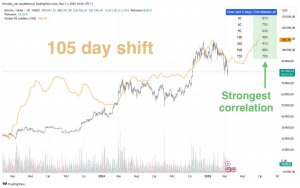15 Days Away from the First Fed Rate Cut: Déjà Vu or New Paradigm?

We’re just 15 days away from what could be the first Federal Reserve rate cut of this economic cycle. With anticipation building, investors are speculating about the potential impacts on the market. But rather than relying on speculation alone, let’s take a historical lens to the situation.
By overlaying the current economic indicators with those from past rate cut cycles—1981, 1990, 2000, and 2007—a pattern begins to emerge. In each of these instances, the economic backdrop was strikingly similar to what we see today: an upward curve in the unemployment rate, a persistent 10-year to 2-year Treasury yield curve inversion, and mounting economic uncertainty.
A Bullish Sentiment: Short-Lived Gains?
Among the Bulls, there’s an optimism that rate cuts will bring about a market resurgence. It’s a sentiment rooted in truth—at least in the short term. Historically, the market has responded to rate cuts with a surge, averaging 25 days of gains post-cut. However, these rallies have often been followed by a protracted sell-off, averaging around 13 months.
This pattern suggests that while the initial reaction to a rate cut is positive, it’s often the calm before a storm. The cuts are typically a response to underlying economic weakness, and once the market absorbs the reality of the situation, the euphoric gains give way to a more sobering decline.
Is This Time Different?
Given the historical context, it’s natural to wonder: Could we see one last pump around the cuts? Will the market defy historical trends and sustain its gains this time around?
The truth is, anyone who claims to know exactly what will happen is lying. While history provides valuable insights, no two economic cycles are identical. The global economy, market sentiment, and investor behavior are influenced by a myriad of factors, many of which are unpredictable.
The Takeaway
As we approach this pivotal moment, it’s essential to remain open-minded. Look at all the data, consider historical trends, but also be aware of the unique variables at play in the current environment. Whether this rate cut leads to a short-term market pump or signals the beginning of a longer-term decline, your best judgment should be grounded in a balanced view of both historical precedents and present conditions.
In the end, the key to navigating the uncertainties ahead lies in adaptability. Be prepared for various outcomes, stay informed, and avoid the trap of overconfidence. The market has a way of humbling even the most seasoned investors, and in times like these, prudence is your best ally.







